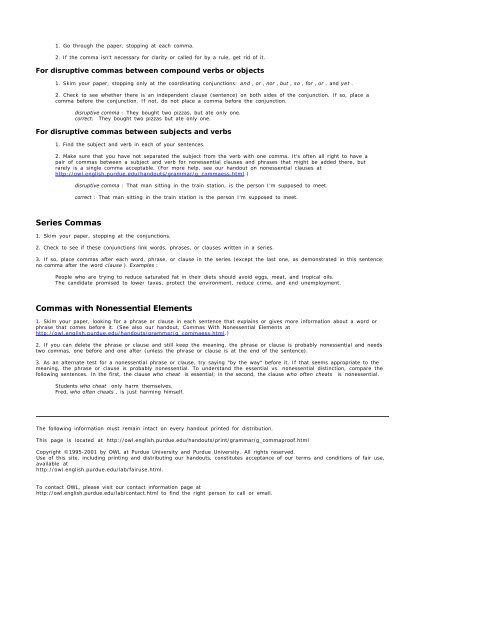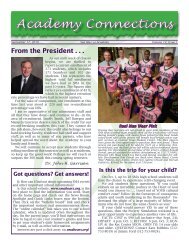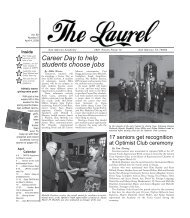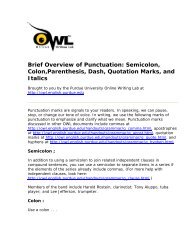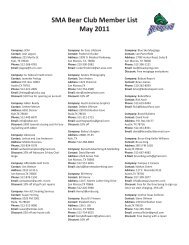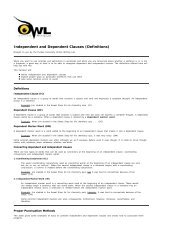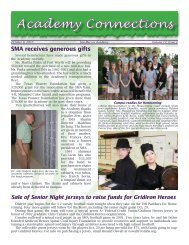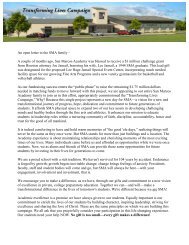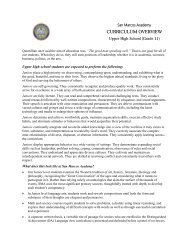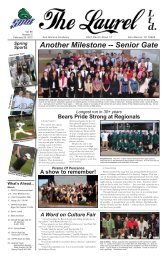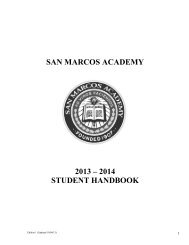Netscape: OWL at Purdue University: Proofreading for Commas ...
Netscape: OWL at Purdue University: Proofreading for Commas ...
Netscape: OWL at Purdue University: Proofreading for Commas ...
Create successful ePaper yourself
Turn your PDF publications into a flip-book with our unique Google optimized e-Paper software.
1. Go through the paper, stopping <strong>at</strong> each comma.<br />
2. If the comma isn't necessary <strong>for</strong> clarity or called <strong>for</strong> by a rule, get rid of it.<br />
For disruptive commas between compound verbs or objects<br />
1. Skim your paper, stopping only <strong>at</strong> the coordin<strong>at</strong>ing conjunctions: and , or , nor , but , so , <strong>for</strong> , or , and yet .<br />
2. Check to see whether there is an independent clause (sentence) on both sides of the conjunction. If so, place a<br />
comma be<strong>for</strong>e the conjunction. If not, do not place a comma be<strong>for</strong>e the conjunction.<br />
disruptive comma : They bought two pizzas, but <strong>at</strong>e only one.<br />
correct: They bought two pizzas but <strong>at</strong>e only one.<br />
For disruptive commas between subjects and verbs<br />
1. Find the subject and verb in each of your sentences.<br />
2. Make sure th<strong>at</strong> you have not separ<strong>at</strong>ed the subject from the verb with one comma. It's often all right to have a<br />
pair of commas between a subject and verb <strong>for</strong> nonessential clauses and phrases th<strong>at</strong> might be added there, but<br />
rarely is a single comma acceptable. (For more help, see our handout on nonessential clauses <strong>at</strong><br />
http://owl.english.purdue.edu/handouts/grammar/g_commaess.html.)<br />
disruptive comma : Th<strong>at</strong> man sitting in the train st<strong>at</strong>ion, is the person I'm supposed to meet.<br />
correct : Th<strong>at</strong> man sitting in the train st<strong>at</strong>ion is the person I'm supposed to meet.<br />
Series <strong>Commas</strong><br />
1. Skim your paper, stopping <strong>at</strong> the conjunctions.<br />
2. Check to see if these conjunctions link words, phrases, or clauses written in a series.<br />
3. If so, place commas after each word, phrase, or clause in the series (except the last one, as demonstr<strong>at</strong>ed in this sentence:<br />
no comma after the word clause ). Examples :<br />
People who are trying to reduce s<strong>at</strong>ur<strong>at</strong>ed f<strong>at</strong> in their diets should avoid eggs, me<strong>at</strong>, and tropical oils.<br />
The candid<strong>at</strong>e promised to lower taxes, protect the environment, reduce crime, and end unemployment.<br />
<strong>Commas</strong> with Nonessential Elements<br />
1. Skim your paper, looking <strong>for</strong> a phrase or clause in each sentence th<strong>at</strong> explains or gives more in<strong>for</strong>m<strong>at</strong>ion about a word or<br />
phrase th<strong>at</strong> comes be<strong>for</strong>e it. (See also our handout, <strong>Commas</strong> With Nonessential Elements <strong>at</strong><br />
http://owl.english.purdue.edu/handouts/grammar/g_commaess.html.)<br />
2. If you can delete the phrase or clause and still keep the meaning, the phrase or clause is probably nonessential and needs<br />
two commas, one be<strong>for</strong>e and one after (unless the phrase or clause is <strong>at</strong> the end of the sentence).<br />
3. As an altern<strong>at</strong>e test <strong>for</strong> a nonessential phrase or clause, try saying "by the way" be<strong>for</strong>e it. If th<strong>at</strong> seems appropri<strong>at</strong>e to the<br />
meaning, the phrase or clause is probably nonessential. To understand the essential vs. nonessential distinction, compare the<br />
following sentences. In the first, the clause who che<strong>at</strong> is essential; in the second, the clause who often che<strong>at</strong>s is nonessential.<br />
Students who che<strong>at</strong> only harm themselves.<br />
Fred, who often che<strong>at</strong>s , is just harming himself.<br />
The following in<strong>for</strong>m<strong>at</strong>ion must remain intact on every handout printed <strong>for</strong> distribution.<br />
This page is loc<strong>at</strong>ed <strong>at</strong> http://owl.english.purdue.edu/handouts/print/grammar/g_commaproof.html<br />
Copyright ©1995-2001 by <strong>OWL</strong> <strong>at</strong> <strong>Purdue</strong> <strong>University</strong> and <strong>Purdue</strong> <strong>University</strong>. All rights reserved.<br />
Use of this site, including printing and distributing our handouts, constitutes acceptance of our terms and conditions of fair use,<br />
available <strong>at</strong><br />
http://owl.english.purdue.edu/lab/fairuse.html.<br />
To contact <strong>OWL</strong>, please visit our contact in<strong>for</strong>m<strong>at</strong>ion page <strong>at</strong><br />
http://owl.english.purdue.edu/lab/contact.html to find the right person to call or email.


